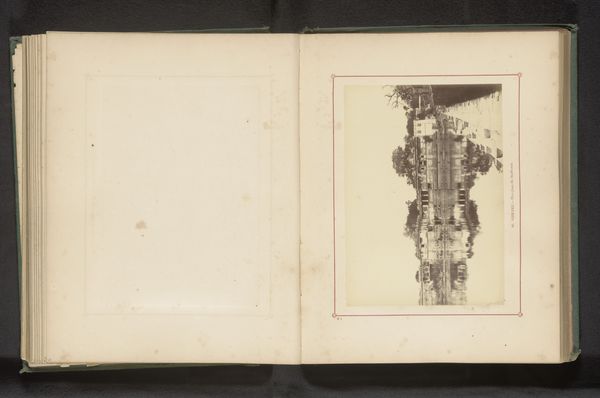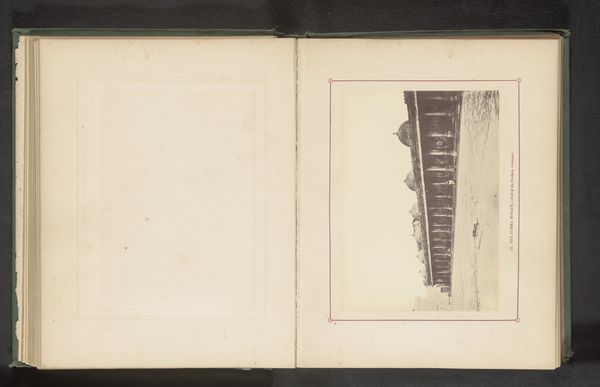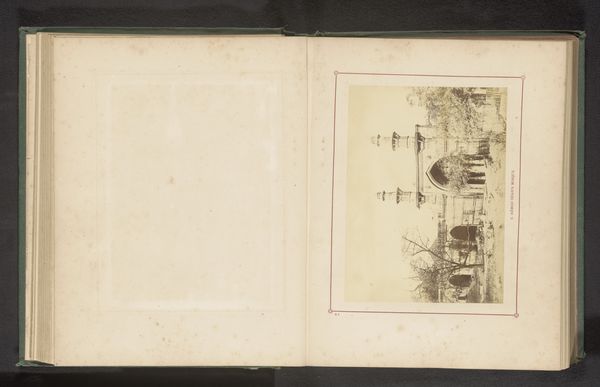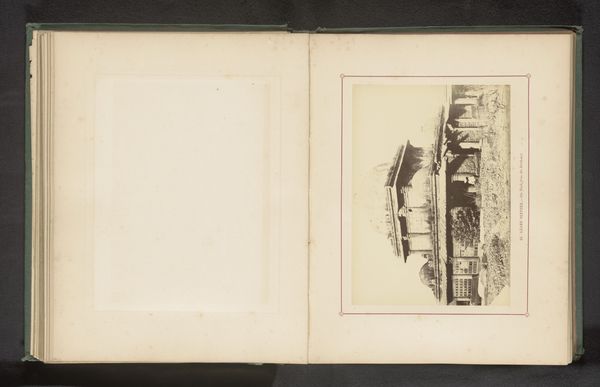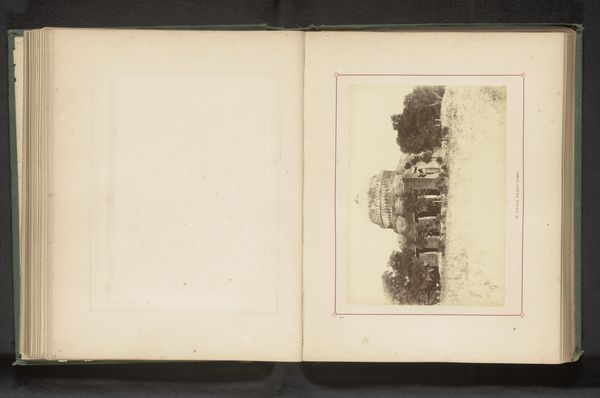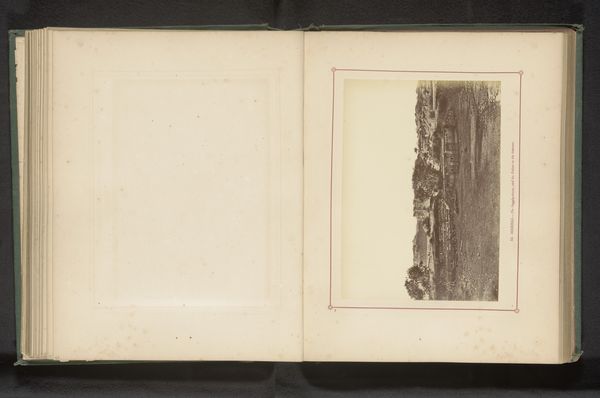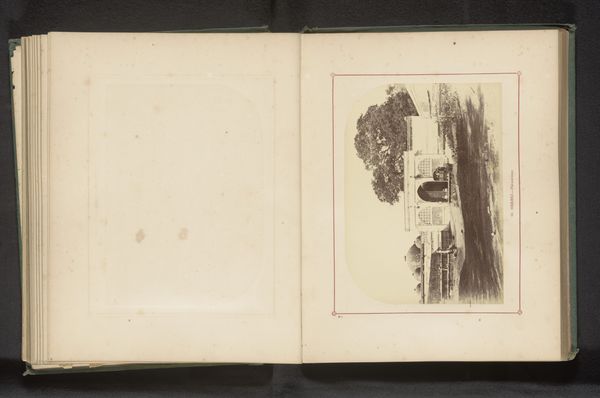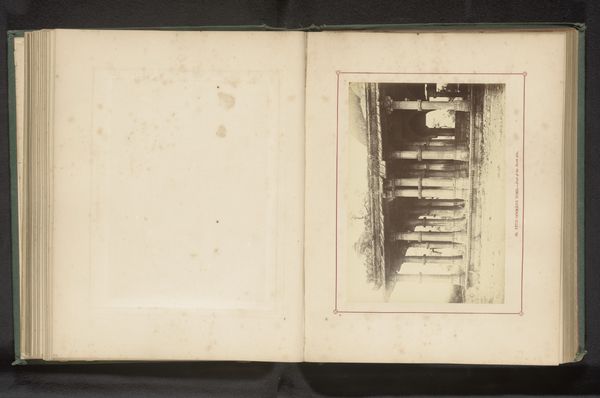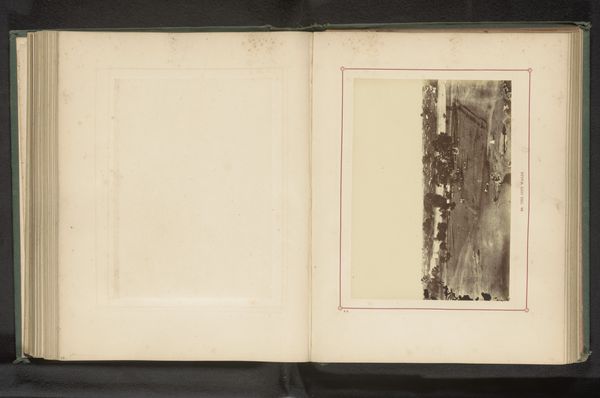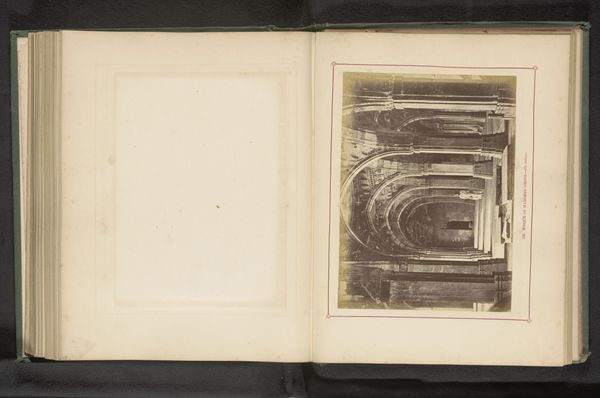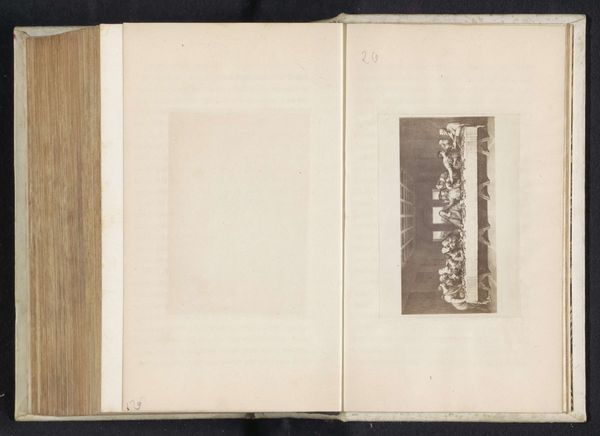
print, photography, architecture
#
aged paper
#
toned paper
#
homemade paper
#
ink paper printed
# print
#
sketch book
#
landscape
#
paper texture
#
photography
#
personal sketchbook
#
sketchbook drawing
#
islamic-art
#
sketchbook art
#
watercolor
#
architecture
Dimensions: height 136 mm, width 187 mm
Copyright: Rijks Museum: Open Domain
Curator: This image presents a view of a mosque at Sarkhej Roza near Ahmedabad, dating back to before 1866. It seems to be a print preserved within what appears to be a personal sketchbook. Editor: The sepia tones immediately lend it an aura of profound age, of something witnessed long ago and faithfully recorded. It evokes a quiet sense of reverence, wouldn't you agree? The composition, though somewhat askew, leads the eye along that colonnade almost hypnotically. Curator: Absolutely. It’s crucial to consider this not just as a standalone image but as part of a larger project of documentation, potentially by a colonial photographer or surveyor. These images often served as tools of empire, reinforcing power dynamics by categorizing and archiving "the other". We should think about the implications of this skewed perspective too; it challenges any neutral claims to documentation. Editor: I find myself focusing on the arches; the way they recede suggests a portal. Arches historically act as transitional spaces. Are we invited to consider what this transition entails here, perhaps a change of status or identity, especially within its geographical setting? Curator: That's a compelling interpretation. And perhaps that sense of transition reflects not only an architectural or spiritual passage but also the turbulent shift in socio-political power of the time. The photographer, though perhaps only aiming to capture an architectural monument, couldn't divorce themselves from the politics of looking and recording within British India. Editor: The use of paper—likely chosen for its capacity to age gracefully, becoming imbued with its own symbolic narrative, and adding another layer of meaning to the image, does intrigue me. Even the reddish frame drawn around the image seems to hold its own symbolic space around what is represented. Curator: Right, considering the material conditions – the type of paper, the printing technique - provides a deeper material and social history that often gets erased when only looking at "artistic merit". This informs how we read colonial-era photography today. Editor: The act of capturing a sacred place implies a need to contain or study its symbolic potency. It speaks volumes about how different cultures engage with the spiritual space. Curator: Indeed. The archive itself – a seemingly objective collection – needs interrogation; this allows us to ask, and to hopefully answer, deeper questions around power, representation, and visual culture. Editor: This aged print, even in its stillness, provides so much richness in reflecting on the cultural significance that imbues historical architectural subjects.
Comments
No comments
Be the first to comment and join the conversation on the ultimate creative platform.
